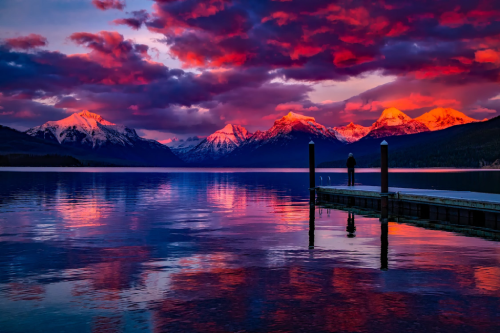Baeugi News Hub
Your source for the latest news and insightful articles.
Snap Happy: Discover the Wonders of Nature Through Your Lens
Unleash your inner photographer! Explore nature's beauty and capture stunning moments with expert tips in Snap Happy.
10 Tips for Capturing Stunning Nature Photography
Capturing stunning nature photography requires not just a good camera, but also an understanding of your environment. Here are 10 tips to help you elevate your shots:
- Scout Locations: Visit potential locations ahead of time to identify the best vantage points and compositions.
- Golden Hours: Shoot during the golden hours—shortly after sunrise and before sunset—for the softest lighting.
- Use a Tripod: Stabilize your camera to prevent blur, especially in low-light situations. A sturdy tripod is crucial for long exposures.
- Composition Techniques: Apply the rule of thirds and leading lines to guide viewers' eyes through your photographs.
- Focus on Details: Zoom in on textures, patterns, and colors to find unique perspectives within your subjects.
In addition to technical tips, consider the emotional connection your images can evoke. Connect with Nature: Spend time observing your surroundings—wildlife, flora, and even the landscape can all tell a story.
- Be Patient: Wait for the perfect moment to capture wildlife at its best.
- Experiment with Angles: Don't hesitate to shoot from different angles—get low to the ground or find a higher vantage point to add depth.
- Post-Processing: Use software like Adobe Photoshop or Lightroom to enhance your images while keeping them natural.
- Share and Learn: Join online communities and forums to share your work and gain feedback from other photographers.
- Stay Inspired: Follow established nature photographers on platforms like Instagram to keep your creativity flowing.

The Best Equipment for Nature Photography: A Beginner's Guide
Embarking on a journey into nature photography requires essential equipment that can significantly enhance your experience and results. As a beginner, it can be overwhelming to choose the right tools, but understanding the basic gear is crucial. The Best Nature Photography Gear includes a reliable camera, a versatile lens, and a sturdy tripod. A DSLR or mirrorless camera will provide the quality you need, while lenses with a focal length ranging from 24mm to 200mm are ideal for capturing expansive landscapes as well as detailed wildlife shots.
In addition to the camera and lens, having a good quality tripod is vital for stability, especially during low-light conditions. Consider investing in a lightweight and portable model that won’t weigh you down on outdoor adventures. Moreover, filters such as polarizers can help enhance colors and reduce glare, making your nature shots even more vibrant. To further improve your technique and get inspiration, check out Nature Photography Guide for tips and tutorials tailored to beginners.
How to Find Hidden Natural Wonders for Your Photography Adventures
Embarking on a photography adventure often leads you to well-trodden paths filled with iconic scenes, but some of the most breathtaking vistas are hidden gems waiting to be discovered. To find hidden natural wonders, start by researching lesser-known destinations in national parks or regional nature reserves. Engaging with local photography communities on platforms like Flickr or Instagram can provide insider tips and locations that are off the radar of mainstream tourists. Additionally, consider using tools like Google Maps to explore satellite images that may reveal lesser-explored areas, aiding you in your quest for unique photographic opportunities.
Once you've pinpointed potential locations, prepare for a rewarding exploration by planning your visit around optimal times for lighting and weather conditions. Early mornings or late afternoons often yield the best light for capturing the essence of these hidden natural wonders. Document why these spots attract you – perhaps it’s an unusual rock formation, a secluded waterfall, or vibrant flora during a unique season. Sharing your experiences and the stories behind your images, along with the locations where you found them, will inspire others to explore beyond the obvious. Lastly, don’t forget to practice responsible photography ethics by respecting natural habitats and leaving no trace to preserve these hidden treasures for future adventurers.